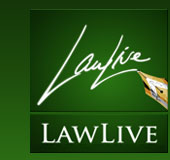I would like to thank you for this fast and reliable service. The documents I purchased were exactly what I needed and I couldn't be any more satisfied.

Deeds of Release
The Deed of Release will usually include in the Recitals (or background information) that there has been a service or employment agreement, the basis for the termination and that the parties mutually agree to the terms in the Deed of Release as full discharge. When dealing with the release of an executive or manager, a Deed of Release may also include specific undertakings in relation to the employer's Confidential Information which may include know-how, business records, customer lists and any other information which is the property of the employer. It is prudent on the part of the employer to include such undertakings in the Deed of Release even though confidentiality undertakings may have been part of the original employment agreement because, as the original employment agreement is being terminated, the Deed of Release ensures the employer's right to bring any action in contravention of those undertakings.
The Deed of Release may also include a restraint clause prohibiting employment either geographically and/or in the same field of commerce, however care should be taken when drafting such a clause to ensure that it is not too onerous and therefore may be varied or be void. Specific legal advice should be sought on this as a valid restraint clause will depend on the employee's profession, how long he or she has worked for the outgoing employer and the position in which the employee was employed.
It is also prudent to ensure that the Deed of Release protects the employer as much as possible from any future claim by the executive/employee. Note however that it may not be possible to contract out of some employer obligations in the future such as a claim under Employees Compensation legislation.
WHAT YOU NEED TO KNOW ABOUT RELEASES:
The Parties
The Releasor is the person or company giving the release. There can be more than one Releasor. The Releasee is the person or company receiving the benefit of the release. There can be more than one Releasee.
Type of Releases The release usually is a release by the Releasor of:
- Claims where there is no litigation;
- Rights and/or obligations arising out of transactions or contracts;
- Claims made in court proceedings (litigation).
Sometimes one or other party has commenced Court Proceedings and as part of the settlement of those proceedings a Deed of Release is required. Usually there will also be a requirement that consent orders be made disposing of the court proceedings either by the dismissal of the proceedings or their discontinuance. Often parties may want to release not just past claims but also future claims.
What is being Released?
Sometimes the required release may be very narrow and relate purely to a specific transaction claim or circumstance. In other situations it can be a very wide and general release. The templates available on LAWLIVE® are drawn very widely so if you wish to narrow them then you may need to consult a lawyer. We suggest you read the document through carefully before signing it and if you are uncertain or unclear as to any aspect seek legal advice before signing.
Generally the Releasee must pay or do something in return for the release. This is contemplated in the LAWLIVE® templates. If there is no substantial sum then we suggest a nominal consideration eg. $10.00 be inserted in the appropriate clause.






